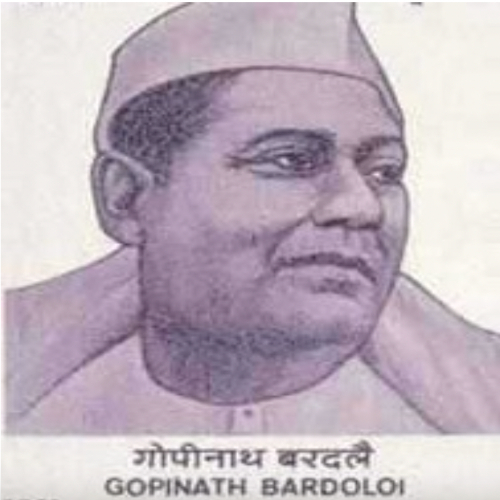Early Life
Gopinath Bordoloi was born on 6th June 1890 in Raha, Assam. He studied Arts at the Scottish Church College, Calcutta, and the University of Calcutta. Bordoloi went on to pursue law and began his legal practice in Guwahati.
In 1936, Bordoloi was elected leader of the opposition in the Assam Legislative Assembly. Two years later, in 1938, he became the Premier (Chief Minister) of Assam. However, after the outbreak of World War II, he and his Cabinet resigned.
Role in India’s Independence Movement
Bordoloi joined the Indian National Congress as a volunteer. He actively participated in the Non-Cooperation Movement and was jailed in 1922. After resigning from the post of Chief Minister of Assam in 1939, Bordoloi was jailed twice; he was eventually released in 1944. In the 1946 Assembly elections, he was once again elected as the Premier of Assam.
Contribution to Constitution Making
Bordoloi was elected to the Constituent Assembly from Assam. He intervened in the debates relating to tribal rights, representation in the Lok Sabha, and taxation.
Later Contributions
Bordoloi was the first Chief Minister of Assam in independent India. He implemented progressive industrial and educational policies and was also responsible for establishing a number of Universities including Gauhati University.
He passed away in 1950 while still in office. The Governor of Assam (1950-56), Jairamdas Daulatram conferred the title Lokpriya or ‘loved by all’ on Bordoloi.
He was posthumously awarded the Bharat Ratna in 1999 for his work in public affairs. In 2002, a statue of Bordoloi was unveiled in Parliament.
Key Writings
He wrote several books that included Annasaktiyog, Shreeramachandra, Hajrat Mohammad, and Budhhadeb.
- The Assembly discussed taxes levied by the Union on 5 August 1949. During this debate, Bordoloi provided the Assembly with a detailed account of the special financial difficulties faced in Assam.
- While discussing the proportional representation of people in the Lower House, on 18 July 1947, he detailed the changes in the Assamese population due to the rising population and migration and proposed changes to ensure Assam had adequate representation.
- On 6 September 1949, as the Chairman of the North East Frontier Tribal Areas and Assam- Excluded and Partially Excluded Areas Sub-Committee, he appraised the Assembly of the existing tribal situation in Assam.
- Lokpriya Gopinath Bordoloi: The Architect of Modern India.
- Lokpriya Gopinath Bordoloi.
- Saiyad Saddullar Pora Gopinath Bordoloi Loi.
- Gopinath Bordoloi (Builders of Modern India Series) by Birendra Kumar Bhattacharyya.

